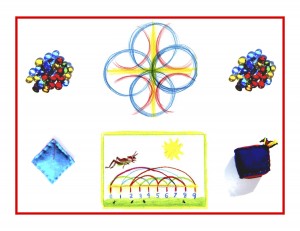Day 157
For one year, 365 days, this blog will address the Common Core Standards from the perspective of creating an alternate, ambient learning environment for math. Ambient is defined as “existing or present on all sides, an all-encompassing atmosphere.” And ambient music is defined as: “Quiet and relaxing with melodies that repeat many times.
Why ambient? A math teaching style that’s whole and all encompassing, with themes that repeat many times through the years, is most likely to be effective and successful. Today’s post will continue reviewing the Common Core ELA standards, which are listed in blue and are followed by their ambient counterparts.
English Language Arts Standards > Speaking & Listening > Grade 2
Presentation of Knowledge and Ideas:
CCSS.ELA-LITERACY.SL.2.4
Tell a story or recount an experience with appropriate facts and relevant, descriptive details, speaking audibly in coherent sentences.
Storytelling is a daily occurrence in the Waldorf environment, by teacher/parents and students alike. In order for children to recount relevant descriptive details, they need to build a storehouse of ability to do just this. A recurrent, troubling aspect of the Common Core is that it consistently asks too much too soon, especially in the younger grades before the age of reason at 11 or 12. Until then they are learning how to relate, with the tools provided by the adults who teach them. Children learn to speak beautifully and clearly primarily through adult example. If the stories are told and lessons are given in a clear and flowing way, this is what teaches the child to speak beautifully and correctly. Retelling the story in great detail and saying poetry, tongue twisters, limericks, and clapping verses by heart will be more than enough to engender audible, coherent speech. Just not spontaneous, original speech, not yet. This is still forming, as the butterfly forms in the cocoon. Rush it at your and your child(ren)’s peril.
CCSS.ELA-LITERACY.SL.2.5
Create audio recording of stories or poems; add drawings or other visual displays to stories or recounts of experiences when appropriate to clarify ideas, thoughts, and feelings.
Audio recordings, no matter how technically perfect, are not the best fare for the young child. There is an inherent distancing quality that robs the developing being of its most crucial necessity, human contact. Your voice (ideally telling the story rather than reading it) enlivens the story, rhyme, or song with a nurturing human touch, more essential for healthy growth and development than just about anything else you can give. Now, drawings! Yes, those happen in abundance, every day, all day. The young child learns though the arts, which act as a beautiful intermediary between the child and any abstract concepts that are taught. It allows a translation so to speak, of the lesson into the language of childhood. Time enough for abstract learning later. Even then, beauty remains as a lifelong friend in a world that is increasingly dry and bereft of esthetic sustenance.
CCSS.ELA-LITERACY.SL.2.6
Produce complete sentences when appropriate to task and situation in order to provide requested detail or clarification.
That word: produce. It’s downright chilling when applied to children under 12 (or over 12, or adults for that matter). It implies a factory-model, production-oriented way of life, which is outmoded now, for reasons of survival: us and the planet. At any rate, complete sentences are routinely produced as the story is retold in faithful detail, and the literary, grammatical structure is effectively learned the way language was learned, by immersion and osmosis. Detail and clarification should not be asked of 8 year olds. They are still thinking in holistic terms, and are not yet able to dissect thoughts in this abstract way.
Knowledge ensues in an environment dedicated to imaginative, creative knowing, where student and teacher alike surrender to the ensuing of knowledge as a worthy goal. Tune in tomorrow to continue with the Common Core ELA standards and their ambient counterparts.












